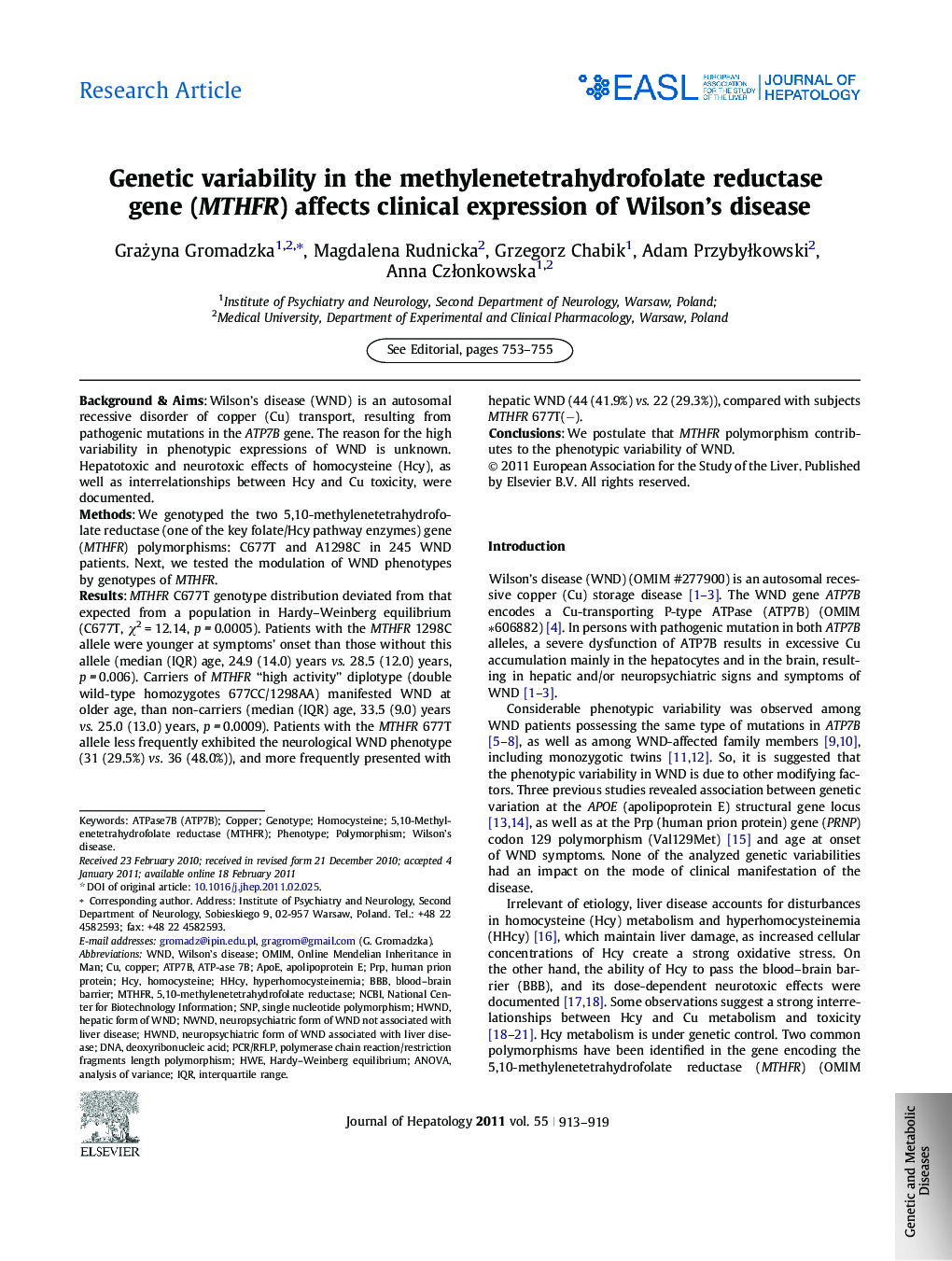| Article ID | Journal | Published Year | Pages | File Type |
|---|---|---|---|---|
| 6107899 | Journal of Hepatology | 2011 | 7 Pages |
Background & AimsWilson's disease (WND) is an autosomal recessive disorder of copper (Cu) transport, resulting from pathogenic mutations in the ATP7B gene. The reason for the high variability in phenotypic expressions of WND is unknown. Hepatotoxic and neurotoxic effects of homocysteine (Hcy), as well as interrelationships between Hcy and Cu toxicity, were documented.MethodsWe genotyped the two 5,10-methylenetetrahydrofolate reductase (one of the key folate/Hcy pathway enzymes) gene (MTHFR) polymorphisms: C677T and A1298C in 245 WND patients. Next, we tested the modulation of WND phenotypes by genotypes of MTHFR.ResultsMTHFR C677T genotype distribution deviated from that expected from a population in Hardy-Weinberg equilibrium (C677T, Ï2 = 12.14, p = 0.0005). Patients with the MTHFR 1298C allele were younger at symptoms' onset than those without this allele (median (IQR) age, 24.9 (14.0) years vs. 28.5 (12.0) years, p = 0.006). Carriers of MTHFR “high activity” diplotype (double wild-type homozygotes 677CC/1298AA) manifested WND at older age, than non-carriers (median (IQR) age, 33.5 (9.0) years vs. 25.0 (13.0) years, p = 0.0009). Patients with the MTHFR 677T allele less frequently exhibited the neurological WND phenotype (31 (29.5%) vs. 36 (48.0%)), and more frequently presented with hepatic WND (44 (41.9%) vs. 22 (29.3%)), compared with subjects MTHFR 677T(â).ConclusionsWe postulate that MTHFR polymorphism contributes to the phenotypic variability of WND.
